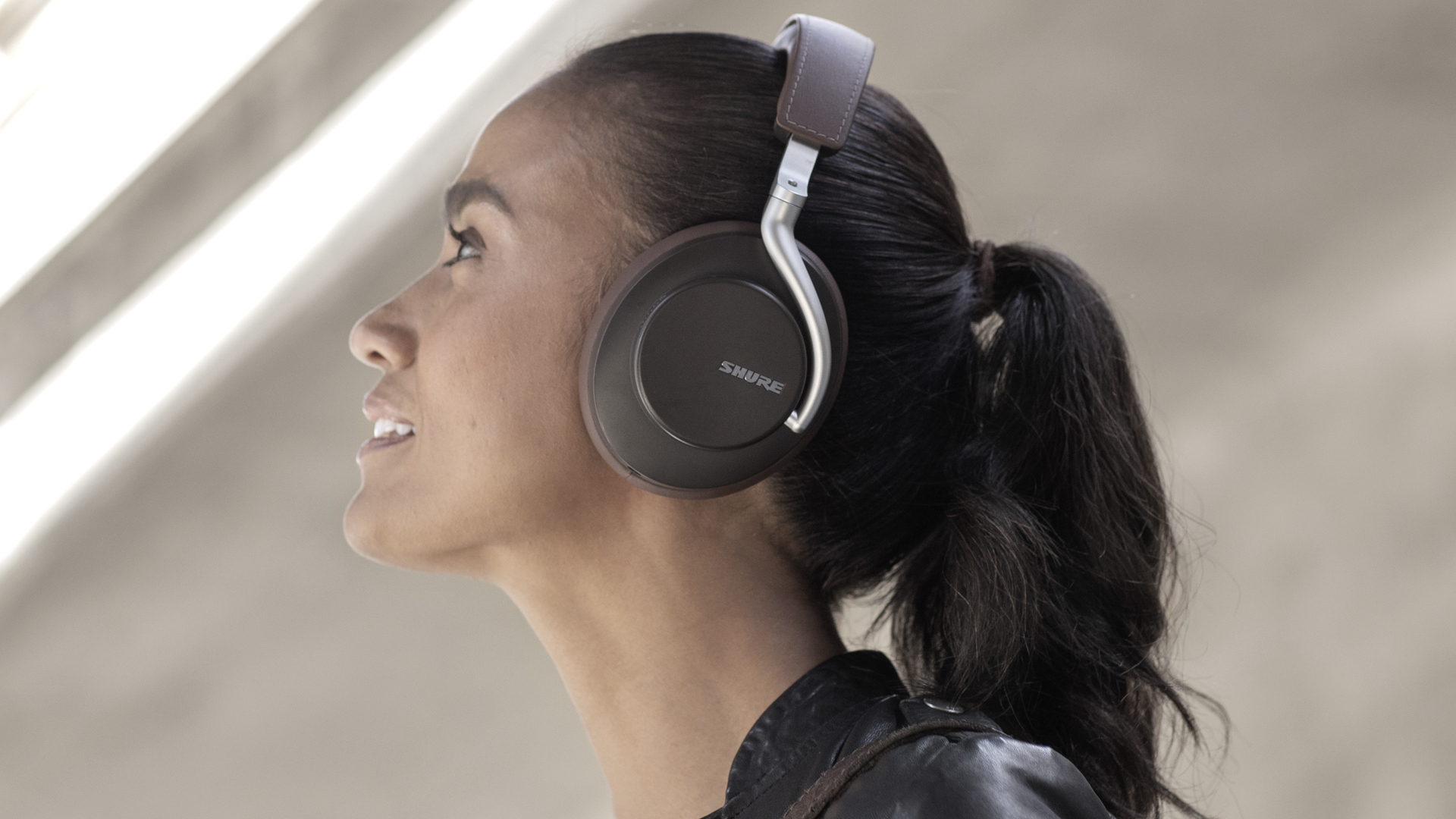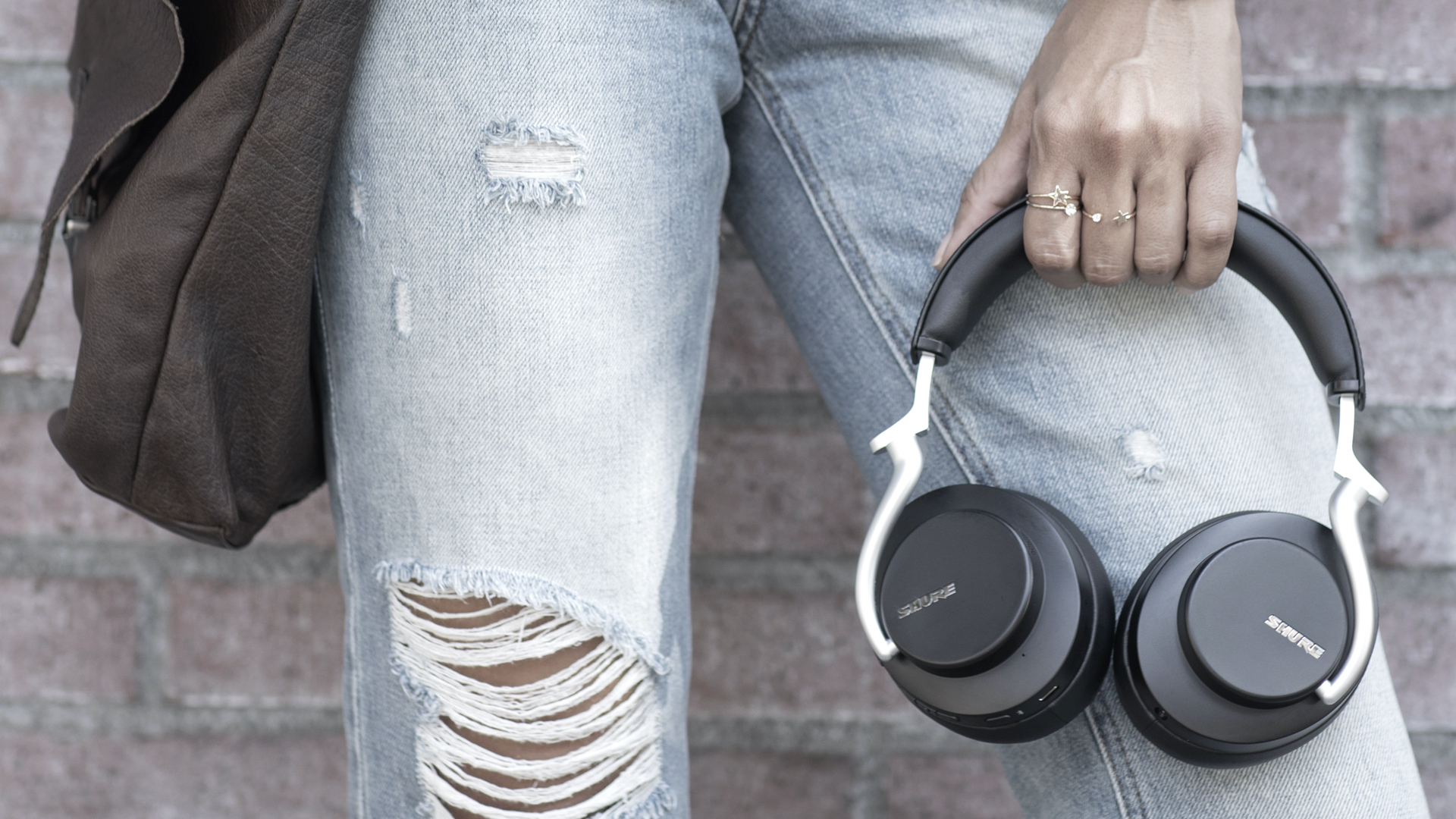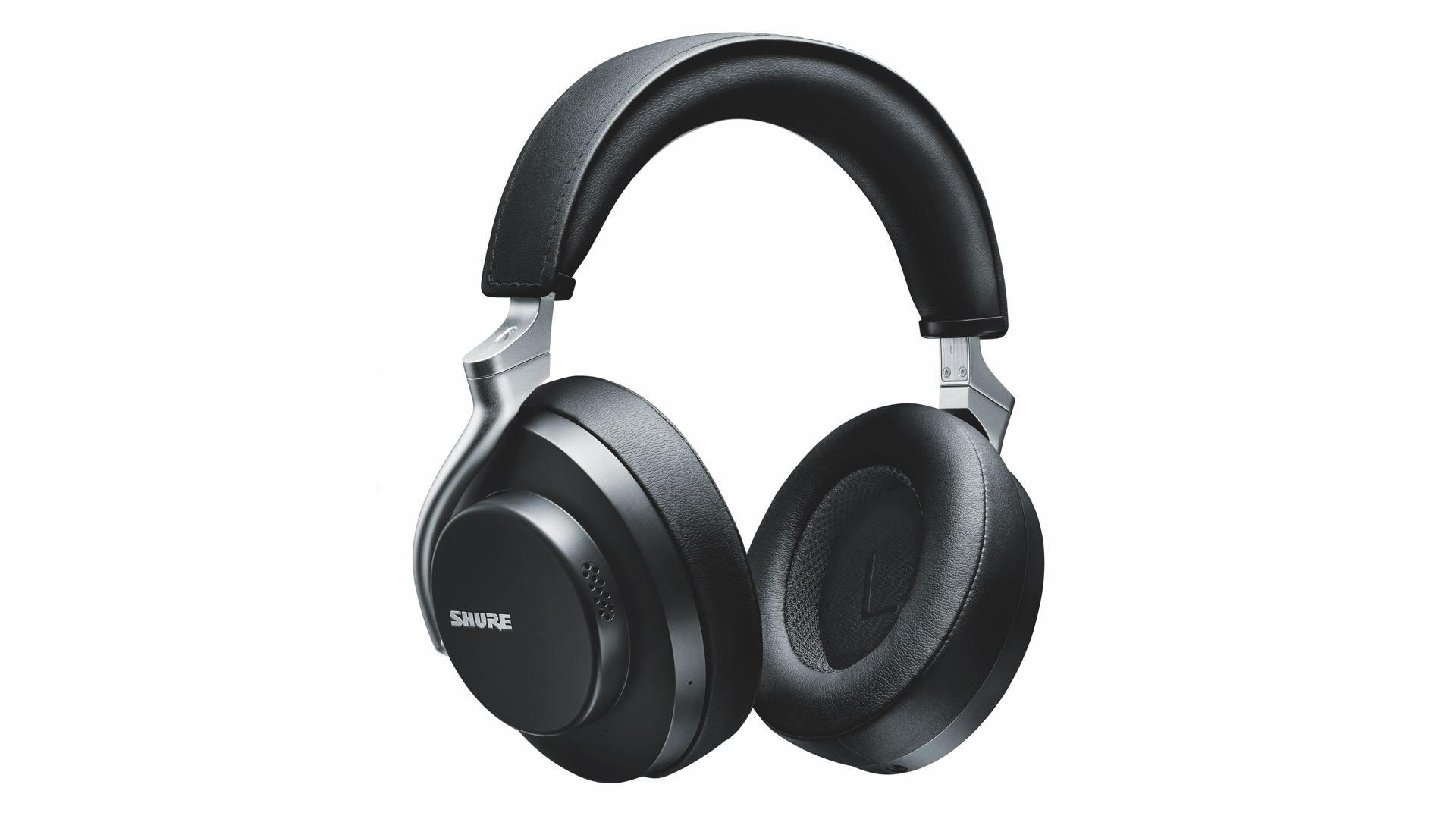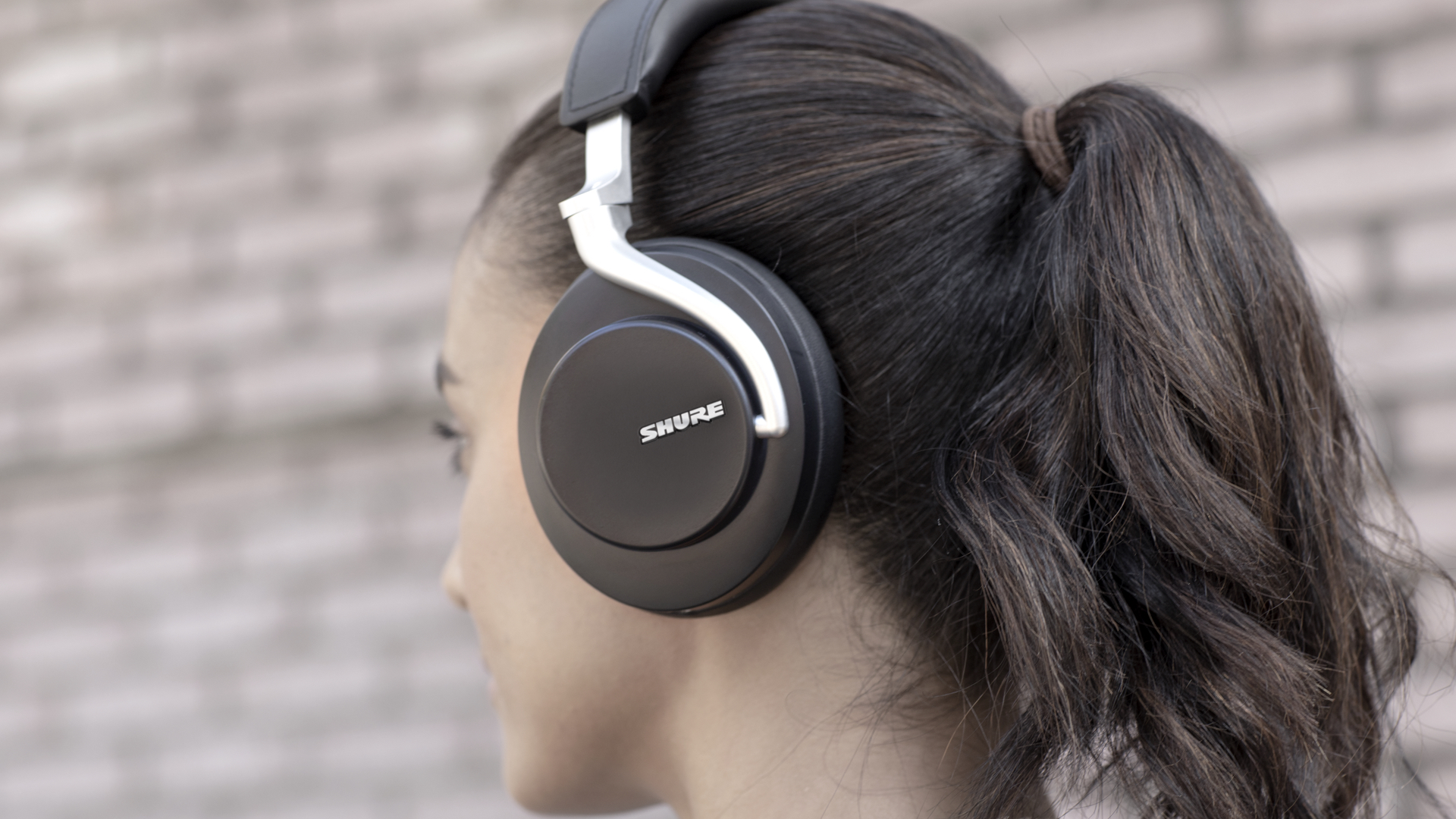Shure Aonic 50 review – Best noise cancelling headphones for pure sound quality
Shure Aonic 50 review: bulky and lacking in new-fangled features perhaps, but still among the very best noise cancelling headphones


Shure Aonic 50 has perhaps the best sound quality of any noise-cancelling headphones if you want a detailed sound that makes the most of hi-res streaming services. As a result, it can reveal flaws in older/worse recordings and lower-quality streams. That aside, it's an absolute pleasure to listen to
-
+
Clean, detailed, explicit sound
-
+
Has ALL of the audio-improving Codecs you could possibly need
-
+
Bomb-proof build quality
-
-
Ridiculous number of buttons
-
-
Restricted EQ adjustment
-
-
Unforgiving with poor quality source material
Why you can trust T3

The Shure Aonic 50 review in a sentence (or AONIC50 as Shure styles it): They don’t have all the features found in the other noise-cancelling headphones, but in terms of audio quality, they are arguably the best on the market.
Yes, Shure has surely taken its own sweet time to get aboard the wireless, active noise-cancelling, over-ear headphones bandwagon. And the route it has decided to go down is not the same cutting-edge feature-packed experience as that offered by the market-leading likes of Sony WH-1000XM3, Britain's Bowers & Wilkins PX7 or the tech-packed Bose NC 700.
However, Aonic 50 are still undoubtedly worth the wait. They don’t do everything you might expect, but they do what they do quite beautifully. And quite frankly, they are the best noise-cancelling headphones for pure sound quality.
Shure AONIC50: build quality, design and battery life
Visually, the Aonic 50 break no new ground whatsoever. Broadly speaking, they’re styled quite like any other premium pair of wireless over-ear headphones, but they are bigger, heftier and more 'basic', as today's modern young people say. If you don't rock an Afro or Brian May-like tresses, they will look more stupid on your head than the other options here. There's no getting around that.
They’re available in either black or brown, and the major contact points are filled with memory foam and covered in soft, lightly aromatic leather. The earpads are detachable, and they attach to earcups made of sturdy plastic and featuring an equally sturdy silver-finished ‘Shure’ logo.
They connect to the headband via weightily damped aluminium arms - and because they only articulate through 90 degrees rather than fold inwards too like many rivals, they’re still quite big when they’re folded flat. Put them in their hard travel case and it’s like a piece of hand-luggage all by itself. Folding them flat doesn’t pause your music, though. That's because unlike many rivals, the Shures don’t feature accelerometers.
At 334g they’re approaching the upper limit of what’s acceptable. But despite the liberal use of plastic there’s real solidity to the way the Aonic 50 feel and adjust, and the build quality is such that they feel ready to last for years.

There are no touch controls anywhere on the Aonic 50, which is again unusual for this market, though not unheard of. It’s possible to exercise some limited control using Google Assistant, though there’s no vocal response from the Shures. No, the bulk of your interaction will be with the physical controls ranged around the right earcup.
A three-button rocker handles ‘volume up/down’, ‘skip forwards/backwards’, ‘answer/end/decline call’ and ‘summon voice assistant’ - or, at least it does once you’ve committed the required button-presses to memory. Finding them with your fingers is by no means instinctive.
A second cluster of controls switches between ‘noise-cancelling on/off/environment mode’ (the last features amplifies external sounds for both safety and convenience). There’s a button for ‘power on/off/initiate Bluetooth pairing’, and a USB-C socket which can be used as a data port as well as a charging port.
The Shures feature Bluetooth 5.0 connectivity, and with it aptX and AAC to improve the sonic results from just about any device on the market. That's by no means all,, though. There's also aptX HD for hi-res digital audio files, aptX Low Latency, for surprisingly precise syncing between audio and video information and even bloody LDAC – for Sony smartphone owners.

Once music is on board and decoded, it’s handed over to your ears by a couple of big (50mm) full-range drivers.
If you fancy adjusting the sound of what you’re listening to, the ShurePlus PLAY applets you switch noise cancelling between ‘normal’, which is pretty effective, and ‘max’, which is more effective but impacts sound quality adversely. You can also turn it off entirely – not recommended. A few EQ sliders, plus some presets, let you tweak the sonics a bit.
The app also works well as a hi-res audio player. It's able to handle locally stored files of up to 32bit, which is generally about as big as they get.
Battery life is good, if not great. Rivals from Bose, Bowers & Wilkins, Sennheiser and Sony will all go for around 30 hours, whereas Shure's 'only' manages 20. That is enough to see you through the longest of long-haul flights, including stopovers, so I wouldn't call it a deal breaker. The way they charge from flat to full in under two hours isn’t bad either.
Over on the left-hand ear cup, there’s a 2.5mm analogue input. So if 20 hours of battery life isn’t quite enough at any point, you can plug in the bundled 2.5mm-3.5mm analogue cable. Now you're really rocking it old school.
Shure Aonic 50: sound quality
Thankfully, the Aonic 50 isn't only old-fashioned in terms of its barrage of buttons, dull styling and lack of cutting-edge, non-audio features. It also boasts a good ol' fashioned audiophile sound. It's less synthetic, less bass-boosted and more involving than even the brilliant-sounding noise cancelling rivals arrayed against it.
In fact for a certain type of listener, Shure Aonic 50 will be the most pleasing-sounding noise cancelling headphones on the market.
Among their peers, the Shure Aonic 50 are perhaps the best equipped to extract meaningful value from a premium streaming service subscription. If you use the likes of Tidal, Qobuz and Amazon HD's hi-res services, these headphones will let you know where your extra money went. They can unpick a complicated arrangement, handle tiny harmonic variances with ease, and open up a recording to the extent that it becomes as simple to follow individual elements as it is to just wallow in the overall sound.
Even if you’re listening to ordinary-resolution music from Spotify’s free tier, the Shures still sound deeply impressive. They balance the frequency range masterfully, but this is even-handedness rather than a lack of passion. They strike a lovely balance between dynamism and energy; poise and control. Their sound is deft, subtle and absolutely loaded with detail, but it isn’t boringly analytical. The music always comes first.
Bass is not as deep and intense as on some rivals but it is clean and punchy. Notes have straight edges, so they don’t blend into each other, and they don’t impact on the midrange above. In fact, they give singers in the midrange as much breathing space as required, but always integrate vocals smoothly into the overall performance. At the top of the frequency range, which can be a minefield for headphones of all types and prices, the Shures walk the line between ‘attack’ and ‘aggression’ really confidently.

Perhaps best of all, they’ll do all this no matter the kind of music you like to listen to. From ‘introverted singer/songwriter with acoustic guitar’ to ‘symphony orchestra in full assault mode’, the Aonic 50 are pretty much unflappable. They simply organise a recording, unearth even the finest details and deliver it with all of the nuance and/or dynamism it requires.
Perhaps the most committed bass-heads will find the default Shure EQ a little on the tentative side where sheer grunt and extension is concerned. If that’s the case, there is no shortage of alternatives ready to deliver some seismic low-frequency presence. And perhaps the Aonic 50 lose their last shred of composure when playing at really high volumes – but doctors suggest you don't do that anyway. Turn it down!
Admittedly, they do also reveal more flaws in bad or dated recordings than most of the other big-name noise cancellers. A lot of 90s dance music and 80s rock sounds decidedly thin, for instance. But then, compared to modern recordings or remastered older ones, those schools of music do sound thin, so let's not shoot the messenger here.

Shure Aonic 50: verdict
Clearly, £359/$399 puts the Aonic 50 at the upper end of the noise cancelling price scale. It's important to note that what you get for your money is great sound and battleship-like build quality, while what you don't get is the raft of features that most headphones in this bracket provide to improve the user experience. They're also pretty big, hefty headphones that are not going to make most wearers look any too chic.
The noise cancelling, while excellent, is also not quite on par with the rest of premium noise cancelling brigade.
However, while the lack of features, visual pizzazz and really booming bass response may deter some listeners, there are plenty of others who will love Shure Aonic 50. In particular, anyone who wants to be sure they're getting the full musical picture, and all of its finest details at the same time.
For while the Shure's noise cancelling headphones may lack bells and whistles, those that it has are delivered with the very sweetest musical fidelity.
Sign up to the T3 newsletter for smarter living straight to your inbox
Get all the latest news, reviews, deals and buying guides on gorgeous tech, home and active products from the T3 experts
Simon Lucas is a freelance technology journalist and consultant, with particular emphasis on the audio/video aspects of home entertainment. Before embracing the carefree life of the freelancer, he was editor of What Hi-Fi? magazine and website – since then, he's written for titles such as Wired, Metro, the Guardian and Stuff, among many others. Should he find himself with a spare moment, Simon likes nothing more than publishing and then quickly deleting tweets about the state of the nation (in general), the state of Aston Villa (in particular) and the state of his partner's cat.
-
 Warning: Ciele’s refreshed Elite Collection may cause excessive garment envy on race day
Warning: Ciele’s refreshed Elite Collection may cause excessive garment envy on race dayFlex on your run crew with Ciele’s latest drop
By Matt Kollat Published
-
 Smeg adds a touch of navy sophistication to its iconic breakfast set
Smeg adds a touch of navy sophistication to its iconic breakfast setIt's a minimalist's dream
By Lizzie Wilmot Published
-
 My most anticipated Netflix movie of the year gets a wild new trailer
My most anticipated Netflix movie of the year gets a wild new trailerHavoc looks pretty unbelievable
By Max Freeman-Mills Published